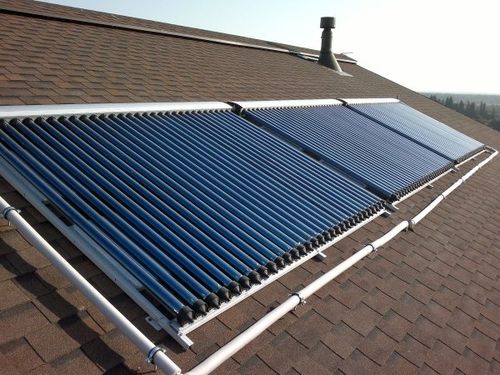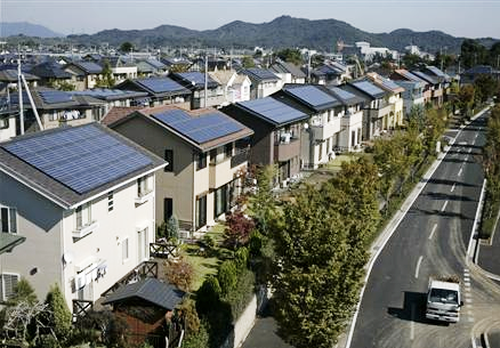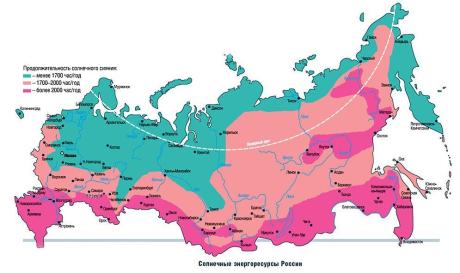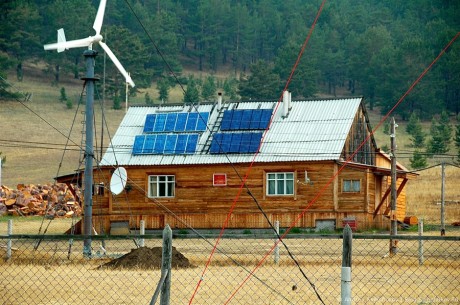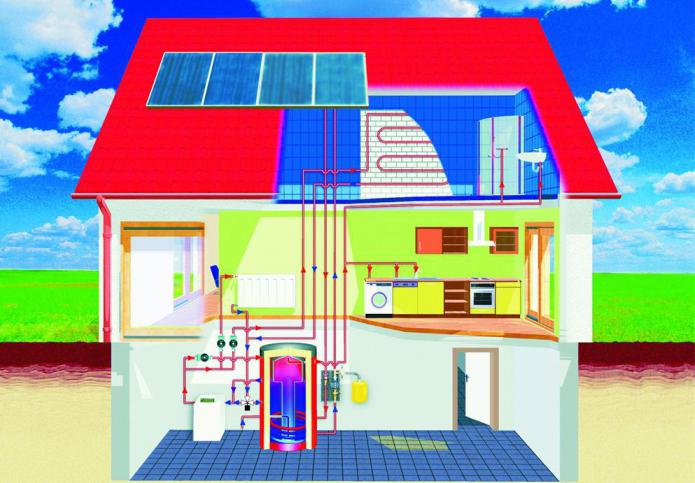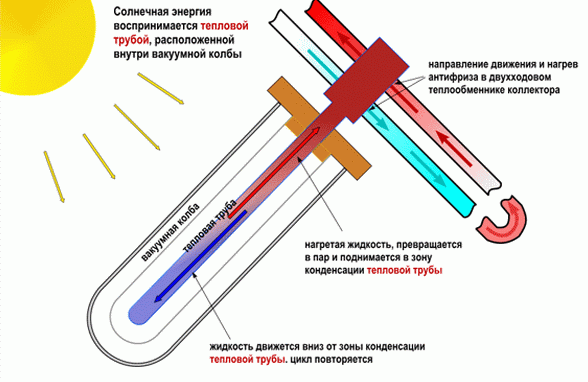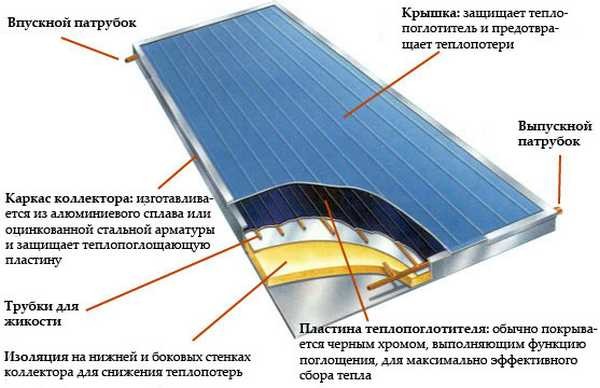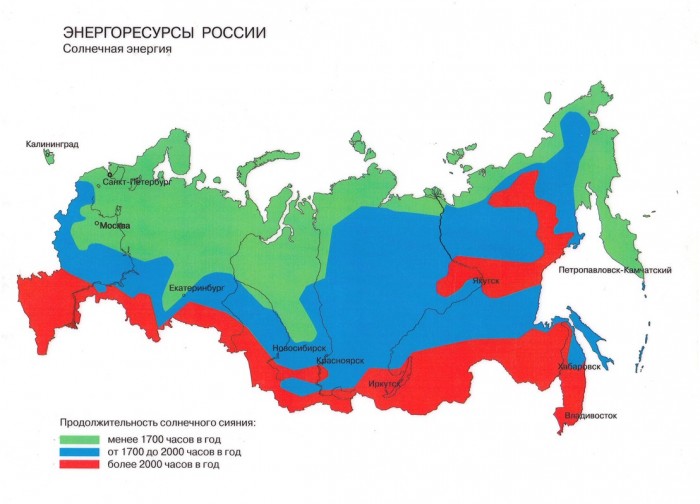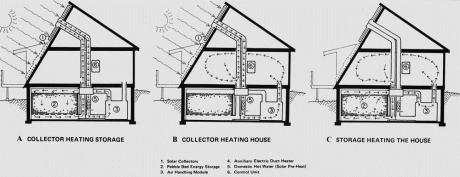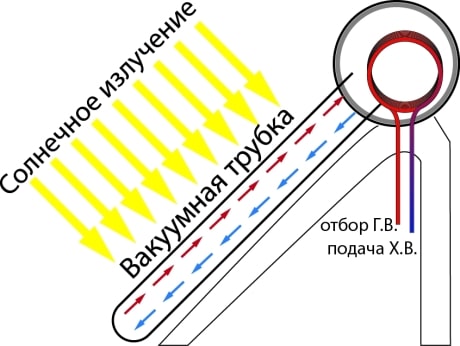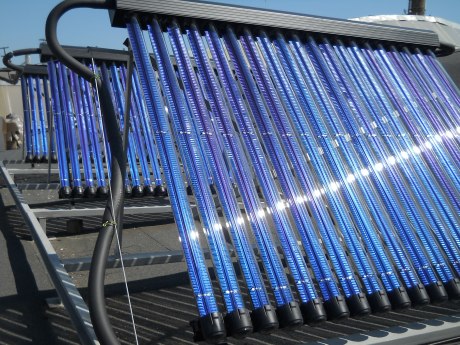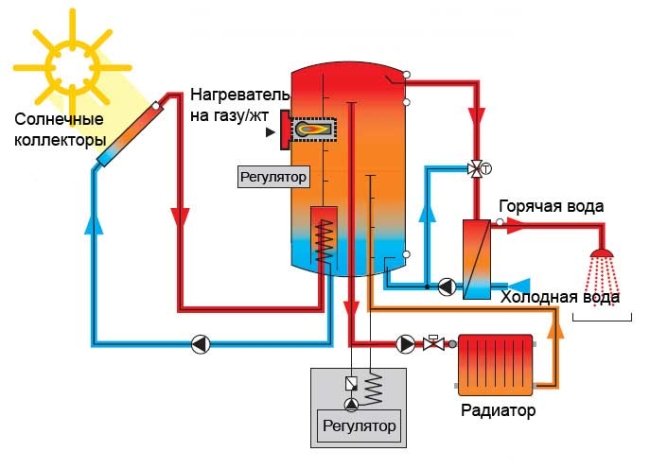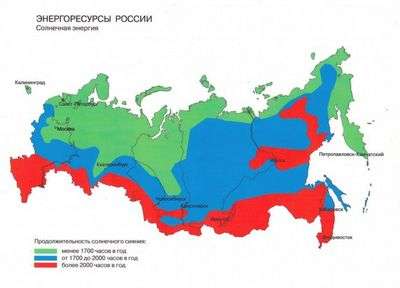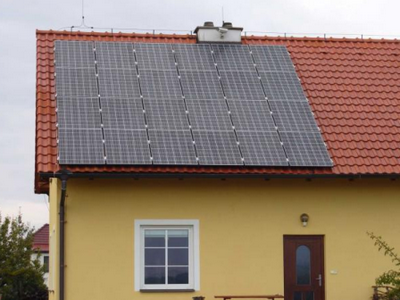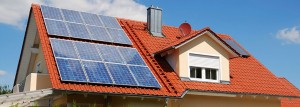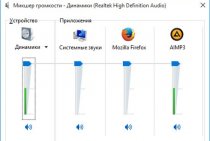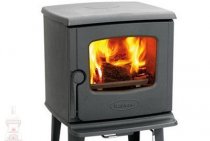solar heating
The essence of the process is to absorb the thermal energy of the sun and transfer it to the coolant, which, in turn, must be transferred to the heating system of the house and transfer heat to the indoor air. Considering how hot the water left in an open dish at noon heats up, the process is nothing supernatural.
Unfortunately, such a system will be most effective during the period of maximum solar activity, that is, from the month of May to August, when the sunny day has the longest duration and the least amount of precipitation falls. In the winter-autumn period, when there is a need for heating, the picture looks different.
A short sunny day already limits the life of the solar device. On cloudy days, neither the collector nor the battery can be used. Therefore, it is not possible to use solar heating as the main one. However, as an alternative source of heat in winter and hot water in summer, the system is quite effective.
Advantages and disadvantages of solar heating
A solar heater for any type of home has the following advantages:
- autonomy of the system - you will no longer depend on utilities and their prices;
- despite the high price of the equipment, the total operating cost will decrease every year;
- noiselessness;
- long service life;
- environmental safety of the allocated energy;
- operation in various climatic conditions: wind, rain, snow;
- ability to store energy.
Flaws:
- The efficiency of use decreases sharply with strong heating of the photocells, so it is desirable to install additional cooling systems.
- The outer surface of the panels must be regularly cleaned from dirt and dust.
- The presence of toxic substances in the composition of photocells. During operation, they do not affect the purity of the energy released, but require safe disposal.
- After 25-30 years of active use, the performance of the panels drops by at least 10%.
- The efficiency of batteries is directly dependent on weather conditions, so they need to be equipped with additional energy conservation systems.
Principle of operation
The principle of operation of solar panels is the formation of electrical energy, they do not accumulate and do not form it. When the rays of the sun directly hit their surface, they are immediately converted into current and removed from the panel.
Each plate can produce 250 watts, so they try to install them closer to each other to improve the principle of operation. The current obtained as a result of photosynthesis, through the distributor, enters the batteries, and then into the inverter of the power grid at home.
It should be noted that the volume of solar batteries affects the duration of the daily operation of the batteries. Recharging the batteries takes place during the day, while the energy generated on the previous day is used.
The principle of operation is simple, and at the same time effective thanks to the "semiconductor". A semiconductor contains atoms that, due to an external electron, can capture or reflect other electrons. As a result, the surface of solar cells is covered with this material. These "semiconductors" are Selenium and Silicon.
Why solar plants are not visible on the roofs of our houses
The Internet is replete with promotional materials with beautiful pictures that tell about the extraordinary benefits of solar systems. Craftsmen post videos on youtube on the topic “heating from the sun with their own hands” about their own know-how, collected on their knees from improvised materials.The web is swollen with rave articles reposting about the miraculous benefits of solar heating. However, how many houses with solar collectors on the roof have appeared in recent years near your home? No one? What are the reasons why solar energy heating is not recognized in our area?
Unfortunately, solar energy for home heating does not come when and where it is needed. It is cold closer to the poles, in winter and at night. And the maximum solar radiation falls on the equatorial regions, in the summer and during the day. Heat accumulators at the very least help smooth out daily, but not seasonal fluctuations.
Map of the intensity of the distribution of sunlight over the territory of Russia. In the Western part of the country, where the lion's share of the population lives, there is little sun. And in eastern Siberia, where the proportion of radiation is noticeably higher, it is cold, which makes it difficult to use active systems. By the way, solar panels that generate electricity are not so sensitive to severe frosts. Quite powerful solar power plants have already been built and are successfully operating in cold but sunny Yakutia.
Passive heating with solar energy is inefficient and is not able to seriously heat the house in the conditions of the Russian winter. “Windows facing south” is a really useful design method that costs nothing but helps to optimize heating costs. But once relatively popular in the United States, solar greenhouses, Trombe walls and their derivatives gradually faded away even in their homeland.
Active solar heating systems for a private house are very expensive, a lot of money will have to be paid for equipment. Operation, contrary to some statements, is by no means free: electricity is consumed, maintenance of equipment is required. At current prices, compared not only with cheap natural gas, but even with rather expensive pellets, diesel fuel, the installation of a vacuum solar collector in the vast majority of the territory of the Russian Federation will never pay off at all, the payback period exceeds the life of the equipment. Only in some southern regions of the country, solar heating systems for a private house may not be unprofitable under certain conditions.
Scientific station on Olkhon Island (Russia). The use of vacuum collectors (on the right on the roof) for preparing hot water and solar panels (on the left) for generating electricity makes sense, because there are no central communications on this rocky Baikal island. However, for full-fledged heating in the climate of Buryatia, solar systems are not enough, “normal” stoves heat the house, the fuel for which is imported from the “mainland”, because it is impossible to harass the local forest for firewood
System selection and installation
The first thing that is required when choosing a particular system is to carefully study its capabilities. It is imperative to calculate the area of \u200b\u200bthe dwelling, as well as the amount of heat that is required to heat it. The installation location is another significant point. Reviews speak in favor of the fact that it would be best to take the help of qualified specialists in this field. This is due to the fact that even with a slight miscalculation, you can greatly reduce the effectiveness of the finished solution during operation. If the solar panel for home heating is installed correctly, it will last at least 25 years. Only 3 years are needed for its full payback. Many do not consider such a period too long, judging by the same user reviews.
This allows you to become completely independent from utilities, and this is very important.
The solar panel for heating the house should be installed so that the solar illumination in this place is maximum. If the selected building is not suitable for the installation of such a system, then you can use the neighboring building. The drive can be placed in the basement. there are also systems where several drives are used.In this case, their sizes will be a little more modest. Those who decide for themselves to choose heating a private house with solar panels can safely say that their decision was correct. Solar energy is an inexhaustible source of heat, and it is absolutely free. To do this, you only need to invest a certain amount in equipment and installation of the system, and then it will not only fully pay for itself, but also eliminate the need to pay money to utilities.
15 Symptoms of Cancer Women Most Often Ignore Many of the signs of cancer are similar to those of other diseases or conditions, so they are often ignored.
Pay attention to your body. If you notice
Our ancestors slept differently than we do. What are we doing wrong? It's hard to believe, but scientists and many historians are inclined to believe that modern man sleeps in a completely different way from his ancient ancestors. Initially.
How to look younger: the best haircuts for those over 30, 40, 50, 60 Girls in their 20s don't worry about the shape and length of their hair. It seems that youth was created for experiments on appearance and bold curls. However, already
10 Mysterious Photos That Will Shock Long before the advent of the Internet and the masters of Photoshop, the vast majority of photos taken were genuine. Sometimes the pictures got really unbelievable.
What is it like to be a virgin at 30? What, I wonder, women who did not have sex until almost reaching middle age.
These 10 little things a man always notices in a woman Do you think your man knows nothing about female psychology? This is not true. Not a single trifle will hide from the gaze of a partner who loves you. And here are 10 things.
Are solar panels profitable for a private house?
In Western countries, the fashion for solar energy is dictated more by concern for the environment than by the search for economic benefits. Our reality is somewhat different.
While maintaining the current prices for the supplied electricity, a do-it-yourself solar battery system for one private house and a family of 4 people pays off in 4-5 years. At the same time, the service life of photocells is 20-25 years, but the batteries will have to be changed after 5-7 years, depending on the quality of the batteries.
So far, nowhere in the world (and Russia is no exception) has there been a decrease in prices for the supplied electricity, therefore, during the life of the photocells in a solar panel, the system will have time to pay off at least 4-5 times.
Design of a heating system on collectors
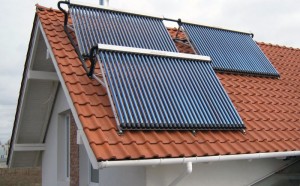
The panel consists of several solar cells interconnected on a frame made of non-conductive energy materials.
Photovoltaic converters are quite complex structures, which are a kind of sandwich of plates with different characteristics and purposes.
In addition to solar modules and special fasteners, the system consists of the following elements:
- batteries, for energy storage;
- a controller that will monitor the degree of charge in the battery;
- inverter - to convert direct current to alternating current.
Collectors are of two types: vacuum and flat.
Vacuum collectors consist of hollow glass tubes with smaller diameter tubes inside containing an energy absorber. Smaller tubes are connected to the coolant. In the free space between them is a vacuum that retains heat.
The principle of operation of the solar collector
Flat-plate collectors consist of a frame and reinforced glass with a photoabsorbing layer. The absorber layer is connected to the tubes with the coolant.
Both of these systems consist of a heat exchange circuit and a heat accumulator (liquid tank).
From the tank, water enters the heating system using a pump. To avoid heat loss, the tank must be well insulated.
Such installations should be located on the southern slope of the roof. The angle of inclination should be 30-45 degrees. If the location of the house or the structure of the roof does not allow installing solar panels on the roof, then you can install them on special reinforced frames or on racks fixed to the wall.
The amount of solar energy released at different times of the year varies greatly. The value of the insolation coefficient for your place of residence can be found on the map of solar activity. Knowing the insolation coefficient, you can calculate the number of modules you need.
For example, you consume energy 8 kW/h, insolation is on average 2 kW/h. Solar panel power - 250 W (0.25 kW). Let's make the calculations: 8 / 2 / 0.25 \u003d 16 pieces - this is the number of panels you will need.
Active heating sunlight collect vacuum collectors
Air solar collector
An air solar collector, equipped with a system of forced transmission and distribution of energy, is able to provide much more heat compared to a passive variant. The air circulation rate is automatically adjusted depending on the temperature in the house and the degree of heating of the collector. The air heated in the collectors can enter the ventilation system or the premises directly. If its temperature is high enough, it can also be used to heat the heat transfer fluid. Excess daytime energy is stored overnight in heat accumulators.
Solar air heating based on a solar collector. From the hollow panel (1) through the air channels (6) the fan drives the air into the technical room, where the automation, depending on the situation, distributes it to the air preparation unit (3) or a massive heat accumulator (2). At the same time, the hot water coil (5) can also heat up. During the day, when the rooms need heating, the system operates in mode B, warm air from the collector is sent to the rooms. When the required temperature in the house is reached, the air flow is redirected to the heat accumulator, mode A. At night, when the collector does not provide heat, the damper closes the channel leading to it, circulation is carried out between the heat accumulator and the premises.
Vacuum solar collector
The most advanced device for solar heating today.
Schematic diagram of a vacuum solar collector. The liquid absorber circulating through the U-shaped tubes, when heated, evaporates and rises up into the collector. The latter is connected to the circuit of the heating system and, in turn, the liquid coolant circulates through it. The absorber gives energy to the coolant, cools down, condenses, goes down. The cycle repeats
Solar heating of a country house based on vacuum collectors is much more efficient than other solar systems, however, in addition to the uneven heat generation traditional for solar systems, it has three more significant drawbacks: in severe frost, heat transfer drops sharply, installations are fragile and expensive.
Vacuum solar collectors should be installed in such a way that they are protected from vandals. This is especially true for our country, getting a pebble into a glass tube is a sweet thing.
Vacuum panels are not connected directly to the heating system. At a minimum, buffer tanks are needed to smooth out uneven heat generation.
The "correct" scheme for connecting a vacuum solar collector to the heating system. Heat is not transferred directly, but through a heat exchanger, daytime excess heat is stored in a heat accumulator (buffer tank) for the night
Please note that the diagram shows a "normal" heating boiler, the solar system only complements it
Electric solar panels can only be used indirectly for heating. It is unreasonable to spend electricity on space heating directly, it can be used more rationally.For example, send fans and automation of active solar systems to work.
According to the portal ZACHESTNYYBUSINESSHOUSE WITH LIMITED LIABILITY SOLAR HEATAccording to the portal ZACHESTNYYBUSINESS6671003032
Organization Rating: Average more
Due diligence (report) ?
BLACK FRIDAY ON HONORABLE BUSINESS
DISCOUNTS FOR EVERYTHING!!!
Status: ?
current
Date of registration: According to the portal ZACHESTNYYBUSINESS
?
According to the portal ZACHESTNYYBUSINESS
28.01.2015
Average number of employees: ?
01.01.2018 – 8
Wage fund / Average salary Available in Premium Access ?
|
OGRN ? |
1156671001321 assigned: 28.01.2015 |
|
TIN ? |
6671003032 |
|
checkpoint ? |
667901001 |
|
OKPO ? |
47680976 |
|
OKTMO ? |
65701000001 |
Details for the contract
?
…Download
Contact information 7-343-21… View
?
Reviews about the organization
?: 0
Legal address: ?
According to the portal ZACHESTNYYBUSINESS
620103, Sverdlovsk region, city of Yekaterinburg, street 2-I Novosibirskaya, house 60
received on 12/29/2015
registered at this address:
According to the portal ZACHESTNYYBUSINESS
Managing organization:
According to the portal ZACHESTNYYBUSINESS
CLOSED JOINT STOCK COMPANY "FORUM-GROUP"
According to the portal ZACHESTNYYBUSINESS
28.01.2015
Founders ? ()
Authorized capital: According to the portal ZACHESTNYYBUSINESS
RUB 10,000,000.00
| 100% |
According to the portal ZACHESTNYYBUSINESS According to the portal ZACHESTNYYBUSINESS
RUB 10,000,000.00, 01/28/2015, TIN |
Main activity: ?According to the portal ZACHESTNYYBUSINESS
35.30.1 production of steam and hot water (thermal energy)
Additional activities:
Unified Register of Inspections (General Prosecutor's Office of the Russian Federation) ?
Register of dishonest suppliers: ?
According to the portal ZACHESTNYYBUSINESS
not listed.
Licenses: ?According to the portal ZACHESTNYYBUSINESS
Tax authority ?
According to the portal ZACHESTNYYBUSINESS
Interdistrict Inspectorate of the Federal Tax Service No. 25 for the Sverdlovsk Region
Date of registration: According to the portal ZACHESTNYYBUSINESS
29.12.2015
Registration in off-budget funds
| Fund | Reg. room | Date of registration |
|---|---|---|
|
FIU ? |
075034123842 |
According to the portal ZACHESTNYYBUSINESS 12.01.2016 |
|
FSS ? |
661710801066151 |
According to the portal ZACHESTNYYBUSINESS 30.12.2015 |
Paid insurance premiums for 2018 (According to the Federal Tax Service):
- for compulsory social insurance in case of temporary disability and in connection with motherhood: 40,397.50 rubles. ↓ -0.04 million (RUB 81,162.30 in 2017)
Statistics codes
|
OKATO ? |
65401390000 |
|
OKOGU ? |
4210014 |
|
OKOPF ? |
12300 |
|
OKFS ? |
16 |
Court cases OOO "SOLNECHNOE HEAT"?
|
found by TIN: According to the ZACHESTNYYBUSINESS portal |
|
Respondent: According to the portal ZACHESTNYYBUSINESS , for the amount: 7,500.00 rubles. |
|
found by name (possible overlap): According to the portal ZACHESTNYYBUSINESS |
According to the portal ZACHESTNYYBUSINESS
Execution proceedings OOO "SOLNECHNOE HEAT"
?
|
found by name and address (possible overlap): According to the portal ZACHESTNYYBUSINESS |
According to the portal ZACHESTNYYBUSINESS
Change feed OOO "SOLNECHNOE HEAT"
?
Not a member of the project PERHONESTBUSINESS ?
Features of solar heating installation
Solar heating is most effective in areas characterized by a large number of sunny days (especially in winter).
Do-it-yourself solar (solar heating) home heating should be done taking into account the specific features of the installation:
Scheme of solar panels. Click to enlarge.
One of the best options is the combined heating of the house by gas (or electric) method and solar energy.
This option, characterized by the integration of elements of the solar system into the existing heat supply scheme, can significantly increase the heating efficiency and increase economic performance.
When performing work in areas characterized by a low level of insolation (the flow of direct sunlight on a horizontal surface), it is necessary to pay special attention to the optimal choice of the collector area and the correct installation. When determining the level of insolation, it should be remembered that its intensity is higher in the middle of the day.
In this regard, the collector planes should be oriented in a southerly direction. Some deviations in the southwest or southeast directions are possible
When determining the level of insolation, it should be remembered that its intensity is higher in the middle of the day. In this regard, the collector planes should be oriented in a southerly direction. Some deviations in the southwest or southeast directions are possible.
When installing the collectors, it is necessary to ensure that they are not shaded by neighboring buildings or trees. Installation of collectors at an angle equal to the geographic latitude of the area can significantly increase their efficiency.
This is due to the fact that the maximum level of solar energy absorption falls on the collector surfaces located at right angles to the direction of insolation.
That is why it is necessary to increase the angle of inclination, which will improve the efficiency of the collector in winter, slightly increasing heat loss in summer. However, in summer, an increase in heat losses is quite acceptable due to an excess of thermal energy.
Heating a house with collector-type solar panels
At its core, collectors are really similar to solar panels, as they capture direct sunlight. An exception for the latter are thin-film plates that emit current from scattered light. As for collectors, hot solar radiation is needed to heat water for flat models. The only option that actively supplies hot water to the pipes of the heating system all winter, even with dense clouds, is vacuum collectors.. It is the vacuum that saves precious heat.
If you decide to take the vacuum option, in this case you also have a choice - models of direct water heating or indirect. The former are considered seasonal, since the storage tank is located directly in the collector housing, and the double-sheathed tubes, inside which the vacuum medium, are connected directly to the tank. In winter, such models cannot be used, the water in them freezes.
Another thing is the heating of the house with collector-type all-weather solar panels. They will work even at -50 degrees and cloud cover, since the storage tank is installed in the house. Such a system operates due to the heat transfer fluid moving through the pipes between the spirals located inside the tank and the collector. The cores of the vacuum tubes are filled with the same liquid. Water is only in the storage tank, from it it flows through pipes into batteries.
Solar heating efficiency
Solar panels are used most often as a source of renewable and free energy. Therefore, in order to heat the house, they will be effective for electric heating systems, as well as for heating water. The solar kit includes:
- ordinary converter;
- AC to DC converter;
- battery level sensor;
- power take-off system;
- panels and batteries.
Heating for the home can be done on the basis of electric heaters. at the same time, you can choose beautiful wall-mounted radiators with sensors and temperature control. to achieve the greatest savings. It is also convenient to use a system such as underfloor heating. In this case, the heating will be uniform, and it will be distributed in the room by the movement of air flows. In terms of efficiency, the system will not be inferior to a radiator or convector. And when using batteries with high power (power can be increased by adding panels), you can use energy to heat water. A set of solar panels for a summer house or a country house in this case will be not only economical, but also useful, especially in areas where there are interruptions in the water supply, or it is turned off for the summer.
In order for the heating of water and the supply of electricity to the house to come with the maximum benefit, a solar battery is installed on the roof of the house. Heating panels in this case will be as efficient as possible.Two batteries lead from the plates, one by one cold water enters the battery, heats up and enters the external heat exchanger. Further into the boiler and distributed to the shower or sink. If the solar battery is quite large, you can try connecting radiators with a coolant in the form of water. This will require a large boiler or tank, an electric pump and a heating element.
If a source of hot water will also work from solar energy, then it is necessary to calculate the power for it. On average 1 square meter of panel area per person. Approximately the same formula is used to calculate the cost of underfloor heating, one square meter of panel per 10 square meters of floor.
If there are not many sunny days in the year, cloudy days and long winters prevail, it is better to use solar energy as an additional source of electricity. Also, for effective work, you should remove possible interference (shade from trees) or exclude the proximity of high-rise buildings. For installation of equipment and installation of panels, you can use the video instruction.
Benefits of a solar heating system
There are several advantages of solar panels for home heating:
- All year round your home is provided with the necessary heat. You can also adjust the temperature in the house at your discretion.
- Total independence from housing and communal services. Now you don't have to pay huge heating bills.
- Solar energy is a reserve that can be used for various household needs.
- These batteries have a very good operating life. They rarely fail, so you don't have to worry about repairing or replacing some components.
There are some nuances that you should pay attention to before choosing this system. After all, such a system may not be suitable for everyone.
In many ways, the quality of such a heating system depends on the geography of residence. If you live in a region where the sun does not shine every day, then such systems will be ineffective. Another disadvantage of this system is that solar panels are expensive. True, we should not forget that such a system will fully pay for itself over time.
The duration of sunshine in Russia
In order to supply the house with the necessary amount of heat, it will be required from 15 to 20 sq.. meters of solar panel area. One square meter emits an average of up to 120W.
In order to receive about 500 kW of heat per month, it is necessary that there are about 20 sunny days in a month.
A prerequisite is the installation of solar panels on the south side of the roof, as it spreads the most heat. In order for solar heating to be as efficient as possible, the angle of the roof should be about 45 degrees. It is desirable that tall trees do not grow near the house and there are no other objects that can create a shadow. The truss system of the house must have the necessary strength and reliability. Since solar panels are not exactly light, care must be taken that they do not harm the building and do not provoke destructive processes. The probability of collapse increases in winter, since at this time, in addition to heavy batteries, snow will accumulate on the roof.
Solar panels are usually placed on the roof of the house.
Despite the fact that solar panels are quite expensive, they are gaining more and more popularity. They are used even where the climate is not too hot. Such a system can also be used as additional heating at home. Such systems are most effective during the summer months, when the sun shines almost every day. However, do not forget that the house must be heated mainly in the winter months.
Where to mount
Roof.Fixing solar panels on the roof is an obvious, but not always the best solution for a private house. A south-facing roof slope does provide the best result of a fixed solar mounting method, but the options don't stop there.
With this fixing, the roof slope should be to the SOUTH
Walls. If the wall "looks" to the south, it is great for placing solar panels on it. Observe if a shadow falls on the wall from trees, outbuildings, a fence, or other objects. Do not place solar panels in these places.
It is also advisable to use the south wall
You should not put panels on the east or west walls. Thus, during the most intense period of daylight hours, you will receive only oblique rays on your panels, which significantly reduces the efficiency of the system.
Free accommodation. The most efficient option for placing solar panels, but requires free space in the yard. With free placement of solar panels in a private house, they can be fixed on hinges and thus, directing their surface to the sun at 90 °.
This arrangement of the batteries allows you to get the maximum power from them.
